A solution for the IndyCar Catch Fence issue
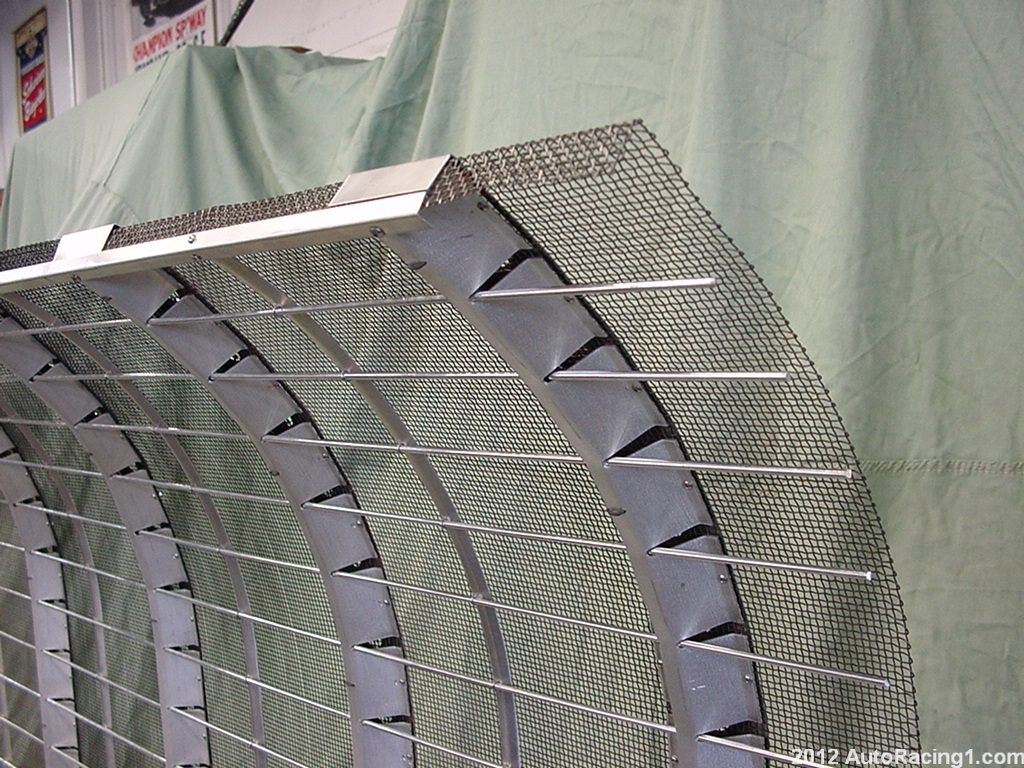 |
| Design published below this Sicking article |
[Editor's Note: We'll see if Dr. Sicking can come up with a system to eliminate the fence posts. Meanwhile, the ideas we published below this Sicking article contains horizontal parallel steel bars in front deformable posts to prevent the car from reaching the netting and getting into a pocket behind the posts as Sicking describes. So the design below addresses Sicking's concerns. The question is whether Sicking can indeed come up with a post-less system that does not block the view of the fans. The only thing we would change on the design published by AR1.com would be to make the holes in the netting larger so the fans have a better view.]
Dr. Dean Sicking's career spent preventing the injury and death of race car drivers has earned him a major say in motorsports safety matters—and in the debate between the Izod IndyCar Series, its drivers and Texas Motor Speedway president Eddie Gossage about the positioning of the track's catch-fence poles, Sicking told Autoweek in an email he “cannot say that having the posts in front of the wire [as they are at Las Vegas Motor Speedway and Texas Motor Speedway] was a major safety issue. It is a bigger problem than having the posts behind the netting, but not much."
The positioning of poles has become an issue since the death of driver Dan Wheldon at Las Vegas Motor Speedway, which, like TMS, has support-poles located inside the mesh. Wheldon perished as a result of a head injury caused by contact with a pole, though an IndyCar report noted that positioning of the pole was not a fatal factor.
However, Sicking, director of the Midwest Roadside Safety Facility, assistant professor of engineering at the University of Nebraska and one of the developers of the Steel and Foam Energy Reduction (SAFER) barrier, said the elimination of all poles is a prime safety goal.
Sicking told Autoweek:
“The following represents my best understanding of how most of these systems work:
“1) When a vehicle strikes the fence netting in front of a post, it tends to be contained by the netting. However, the netting deflects a lot and bends around the post. The bottom line is that the fence material doesn't generate a lateral force until it deflects quite a bit. This causes the netting to generate what we call a pocket behind the post. Whatever part of the car that is leading, front or back will be caught in the pocket and the pole strikes the middle of the car, where the driver is often contacted directly and he/she dies. For this, ‘most common' impact condition, having the fence on the front side versus the backside is of little import.
“2) The only time that the posts on the front of the wire would be likely to matter is when the car is basically traveling parallel to the fence and the post is contacted by either the driver's head (IndyCar) or a stiff part of the car (NASCAR). This impact condition is relatively rare, but it does happen.
“I think that having posts in close proximity to the wire is the problem. I am afraid that many people want to say that if we just move the posts behind the fence, all would be well. Nothing could be further from the truth. Having the posts behind the netting is akin to being shot in the head with a .38 instead of a .357. Most of the time, the outcome is the same. I want to get rid of the gun [posts], not reduce the powder behind the bullet.'' AutoWeek
03/08/12 A reader writes, Dear AR1.com, I'm a metal fabricator that came out of the racing industry originally working for Dan Gurney's All American Racers during the Toyota GTP days and most recently working at Tesla as a contract fabricator on the Model X prototype at their design studio in Hawthorne, CA. I have a little engineering background (just enough to be considered dangerous), but have a great deal of "common sense" design application. When faced with a complex problem, it consumes me until I find a solution. And when I find a solution, I continually refine it until I think it can't be improved any further.
There has recently been some columns on AutoRacing1 regarding current race track catch fence configurations. I agree with you that the vertical poles on the outside (track side) of the horizontal restraint cables is a dangerous situation. But the bigger problem is the wire mesh screen that is used to stop crash debris from the spectator area and also tie the barrier components together. When any vehicle, regardless of type flies into the catch fence, the wire mesh has a tendency to entangle the cars (or trucks as in Daytona), causing the vehicles to spin violently back into the fence, literally tearing the cars apart. The design contradiction here is that the very item (the wire mesh) that is used to protect the spectators from debris is the very instrument that causes the disintegration of the vehicle and the debris in the first place. In addition, if you look at last weekends Daytona truck race crash into the barrier, you will see that when the truck gets caught up in the wire mesh, it's actually trying to stop it's forward momentum, putting a great deal of unwarranted load on the fence. Over the years there has been a handful of serious but non-fatal incidents, especially with Indy cars caught up in the wire mesh. Unfortunately, on October 16th of last year, the current catch fence design cost Dan Weldon his life in Las Vegas.
After that tragedy, I started thinking about how to change or upgrade race track catch fences in use today. What I wanted to accomplish was a barrier that deflected the cars instead of entangling them. Before you ask yourself how a simple metal fabricator can come up with a new concept when the best engineers out there haven't, give me the benefit of a doubt for one minute. If you look at the pictures attached, the first thing I did, (with the vertical stanchions BEHIND the horizontal restraint cables) was to design a deflection plate that mounts inside the vertical uprights in an attempt to deflect the cars out away from the posts upon impact. But the biggest improvement is locating the wire mesh screen approximately 10 to 12 inches back from the vertical stanchions and horizontal cables. In this way, the wire mesh is still doing it's two jobs of tying the system together and containing crash debris. In between each vertical stanchion a thin angled plate is attached to the top of the wall and will prevent the horizontal cables from spreading apart upon impact.
This new concept can be retrofitted to any current race track catch fence eliminating the need for track owners to tear down existing catch fences and start over. The biggest obstacle I see is convincing race track owners there is a problem out there with the current design in the first place, and if there is a problem, how can a metal fabricator find a solution to this problem when engineers can't.
Sincerely,
John Weatherwax
Cutting Edge Metal Specialties
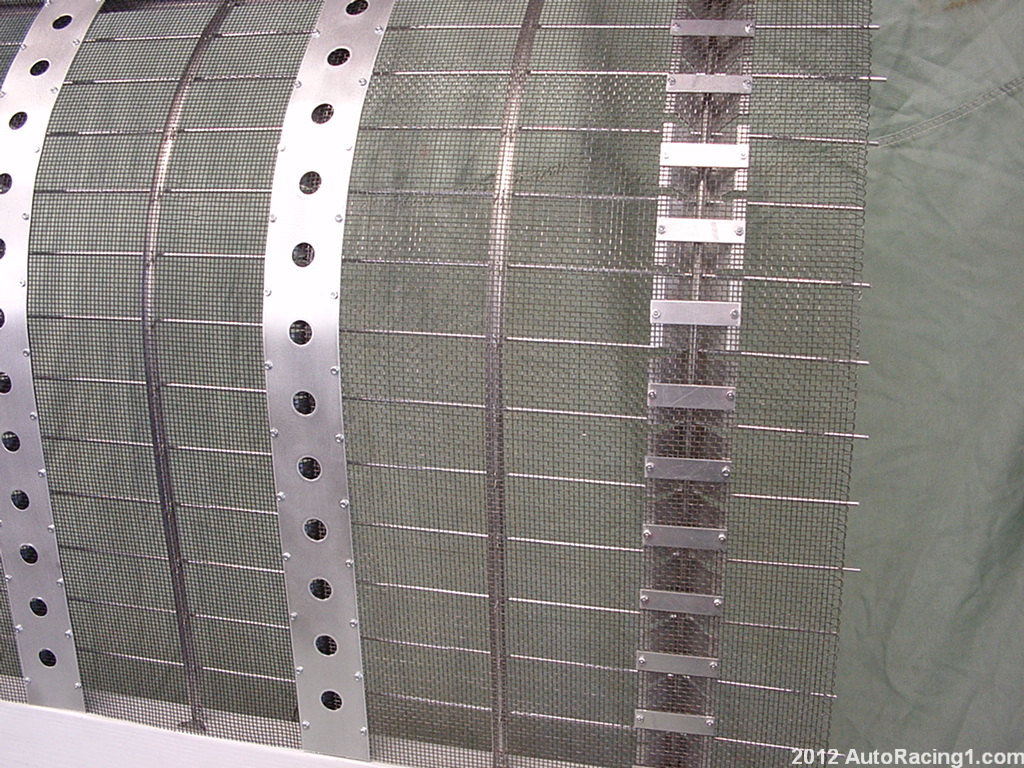 |
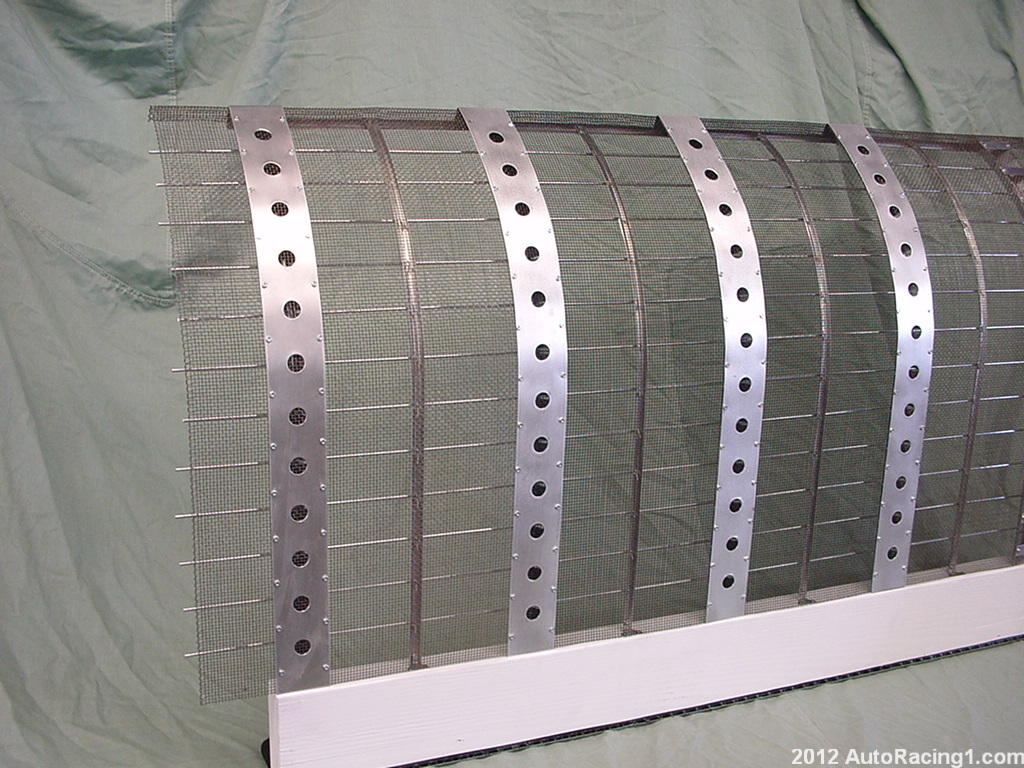 |
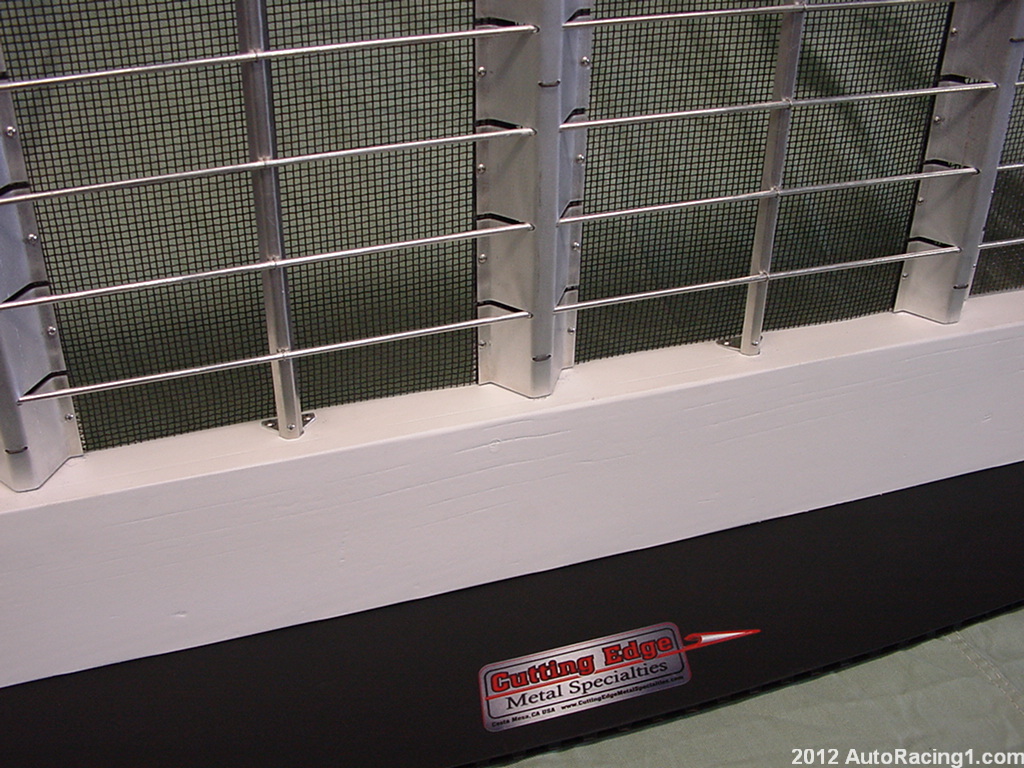 |
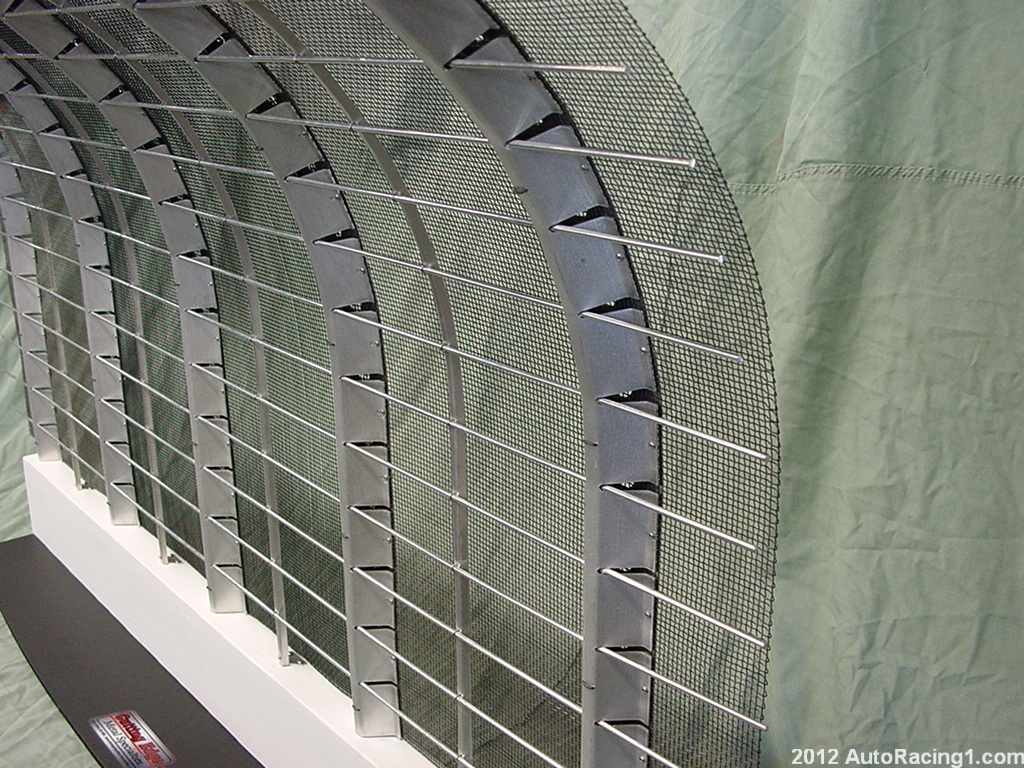 |
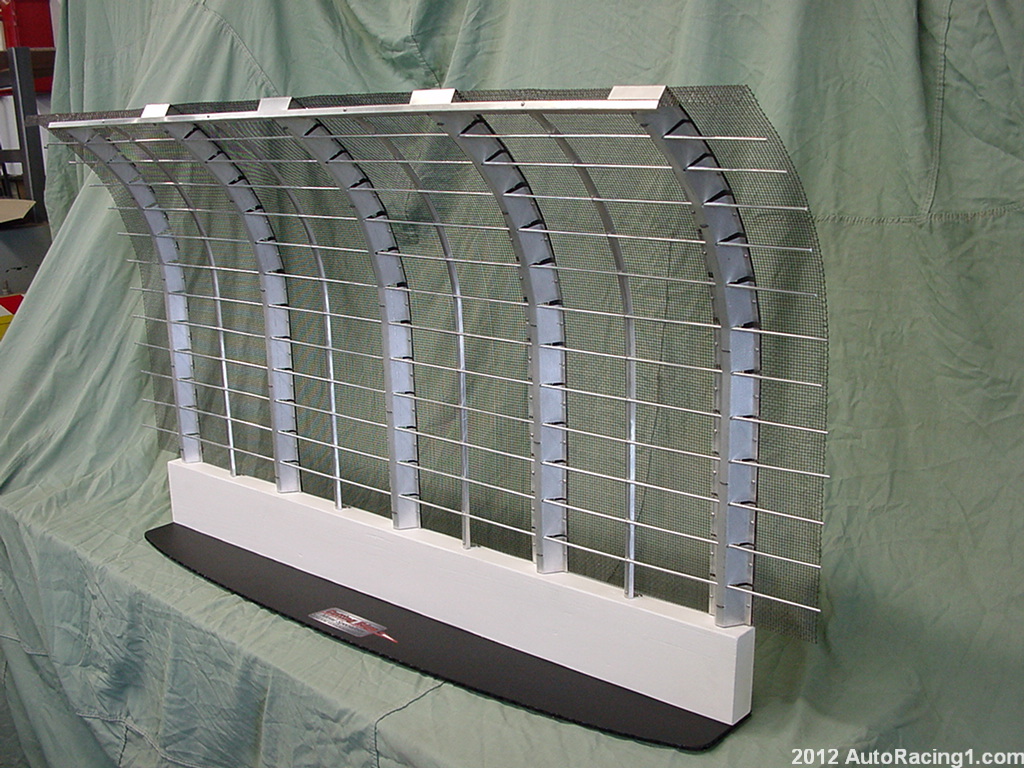 |
 |
|
The verticle fence posts |
are deformable reducing |
risk of a fatal accident |
Watch Kenny Brack get ripped apart by the Texas Catch Fence
Watch Davey Hamilton's legs get ripped apart by the Texas Catch Fence
Watch another huge IndyCar crash at SMI's Atlanta track
